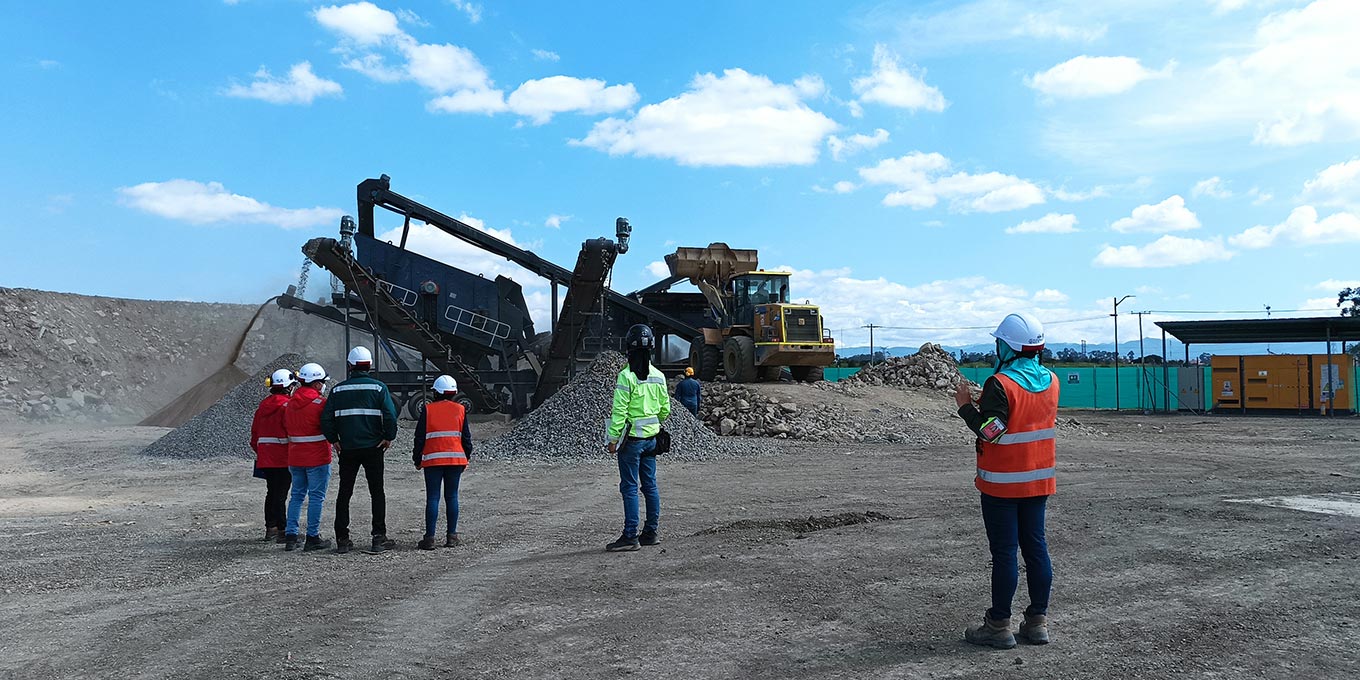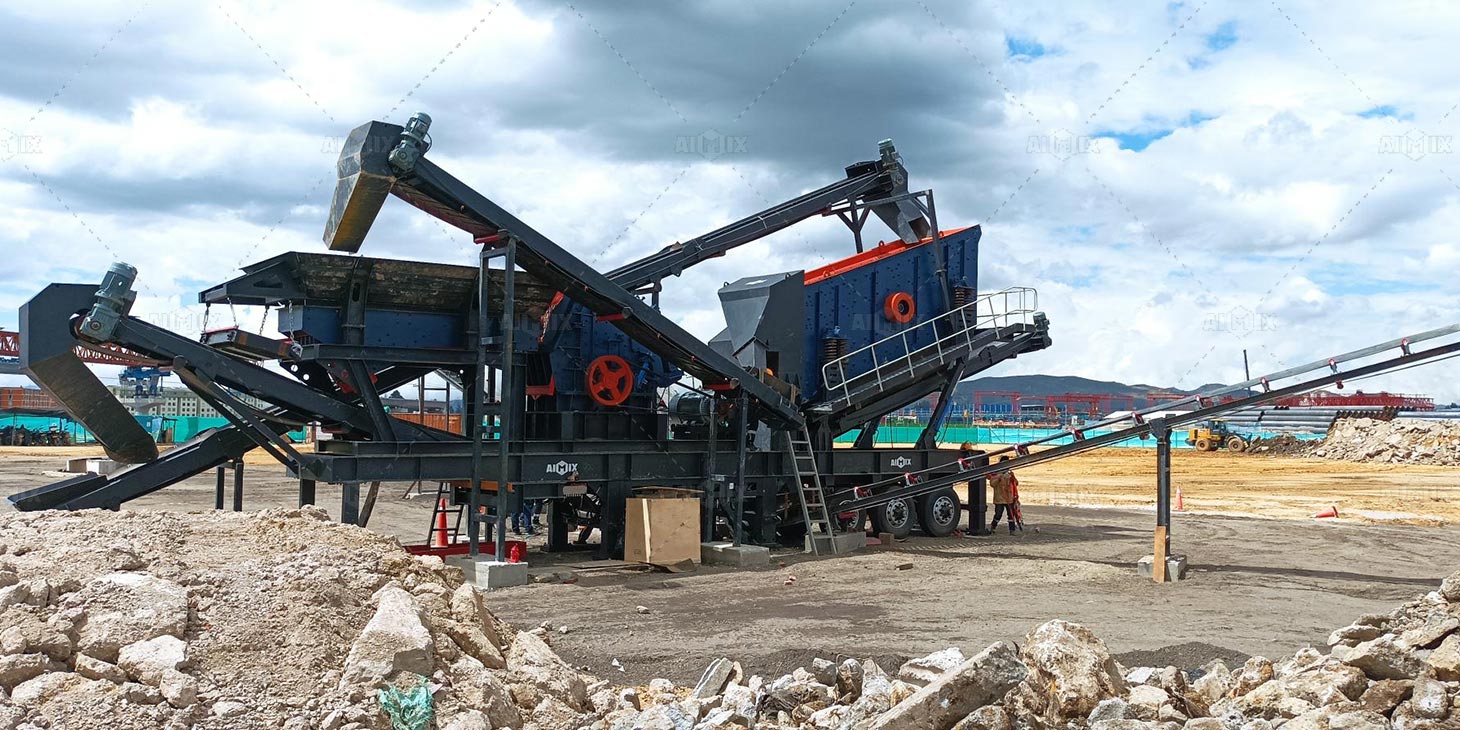Mobile impact crushers are essential tools in the mining, construction, and demolition industries, providing the versatility to handle a wide variety of materials. They deliver efficient material processing by crushing and shaping aggregates, concrete, and other debris. However, the longevity and efficiency of these crushers are heavily influenced by the **wear parts** they rely on. These parts, which endure continuous friction, impact, and wear, directly affect the machine's performance, uptime, and overall operational costs. In this article, we explore the role of wear parts in the longevity of mobile impact crusher and offer insights on how to maximize their lifespan for optimal results.
Wear parts are components that experience **constant friction** and **abrasion** during the crushing process. In mobile impact crushers, these parts primarily include **blow bars**, **impact plates**, **liner plates**, and **hammers**. Their primary function is to break down hard materials like rocks, concrete, and asphalt into smaller, more manageable pieces. Each of these parts plays a crucial role in ensuring the crusher operates at peak efficiency, while also contributing to the machine's overall durability and ability to withstand harsh environments.
The **blow bars** are perhaps the most critical wear parts in a mobile impact crusher. They strike the material being processed and direct the impact force necessary for breaking it down. Impact plates and liner plates, on the other hand, protect the crusher's internal components from the constant wear caused by the high-speed impacts. These parts also contribute to directing the material flow and ensuring that it is efficiently crushed. Hammers, which are typically found in horizontal shaft impact (HSI) crushers, perform similar tasks, transferring kinetic energy to the material to achieve the desired particle size.

The material composition of wear parts is a critical factor in determining their **durability** and **performance**. High-quality, abrasion-resistant materials such as **high chromium alloys** or **martensitic steel** are often used in manufacturing wear parts for mobile impact crushers. These materials are designed to withstand high impact forces and reduce the rate of wear during operation. However, not all materials are created equal, and the type of material being processed also impacts how quickly wear parts degrade.
For example, crushing abrasive materials like granite or basalt will place significant stress on wear parts, leading to **faster deterioration**. In contrast, softer materials like limestone or recycled concrete produce less wear on components. This is why it's crucial for operators to select wear parts made from the appropriate materials based on the **hardness** and **abrasiveness** of the materials being processed. Proper material selection can significantly extend the life of the wear parts and improve the overall efficiency of the mobile crusher plant.
While the material composition plays a significant role in wear part durability, regular **maintenance** is just as critical to ensuring a mobile impact crusher performs at its best over time. Regular inspections and timely replacements of worn-out components are necessary to prevent equipment failure and maximize uptime. It's essential for operators to **monitor wear patterns** on parts such as the blow bars and liners, as these components wear out at different rates depending on the material and crushing conditions.
One effective maintenance practice is regularly adjusting the **clearances** between the wear parts and the rotor. Ensuring that the blow bars and impact plates are correctly aligned and not overly worn allows for optimal crushing efficiency and reduces the need for frequent part replacements. Additionally, **lubrication** of the moving parts helps to minimize friction, preventing premature wear and reducing the risk of overheating. When replacing wear parts, it’s also crucial to use **OEM (Original Equipment Manufacturer)** parts, as they are designed specifically for the crusher and are more likely to provide the necessary durability and performance required.

As wear parts play a crucial role in the crushing process, their **condition** directly impacts the overall **performance** of the mobile impact crusher. Worn-out parts can lead to a decrease in crushing efficiency, resulting in increased energy consumption and a **reduced throughput**. When wear parts degrade, the crusher must work harder to achieve the same output, leading to greater fuel consumption and higher operational costs.
Furthermore, the **cost efficiency** of operating a mobile impact crusher depends on the frequency of wear part replacements. When parts wear down too quickly, operators are forced to purchase replacements more often, driving up the **total cost of ownership**. By investing in high-quality wear parts, maintaining proper maintenance schedules, and monitoring wear patterns, aggregate crusher operators can extend the lifespan of the components and minimize **downtime**, reducing operational costs in the long run.
To ensure a mobile impact crusher remains efficient and cost-effective, smart wear part management is essential. This involves not only selecting the right wear parts but also implementing proactive measures to optimize their performance. **Tracking wear rates** and identifying potential issues before they lead to failure can prevent costly repairs and improve machine uptime. Additionally, adopting **predictive maintenance** practices, which use data analytics to predict when wear parts are likely to fail, can help operators plan for replacements in advance, minimizing disruption to the workflow.
Using **wear part monitoring systems** that provide real-time data on wear rates and part conditions can give operators a clearer understanding of how their equipment is performing. This data can be used to make informed decisions on when to replace parts and how to adjust operational parameters to reduce wear. By continuously monitoring wear part performance, operators can keep the mobile impact crusher running at optimal capacity and extend its useful life.
In conclusion, wear parts are integral to the longevity and performance of mobile impact crushers. By selecting the right materials, maintaining regular inspections and maintenance schedules, and leveraging smart management practices, operators can ensure that these crucial components last longer and perform efficiently. With proper care, mobile impact crushers can continue to deliver high-quality material processing for years, while minimizing downtime and reducing operational costs. As the demands of the crushing industry continue to evolve, the role of wear parts in maintaining crusher efficiency and longevity will only become more important.